Intro
Disclaimer: The EDC3 were sent to me free of charge by Massdrop in exchange for an honest review. I will keep the review as fair and unbiased as possible. Thanks Christian!
Also, this review is quite long as I may have gotten a little carried away when typing it up.
I am sorry for any weird formatting issues you may come across as this is essentially a copy-paste from Reddit, where I originally wrote this review.
My Preferences: I generally prefer a flat/neutral frequency response with a bit of extra energy in the upper midrange (+3dB above 4kHz) and sub bass regions (+3dB below 150Hz). I generally dislike any sort of midrange recession. The response of the Etymotic ER4XR, 64 Audio A6t, and Focal Utopia are good references for the kind of sound signature I like. An HD700 with Sonarworks True-Fi is generally my reference for a neutral sound.
TL;DR: These are now my go-to recommendation for a neutral IEM at the $100 price point. They have an excellent, somewhat mid-centric sound and good accessories. On top of that, they're very comfortable and have a stable fit.
The Non-Sound Stuff
Packaging/Unboxing: The packaging has a nice, clean look to it. Inside the outer box are the IEMs and the carry case. With the exception of the medium silicone tips and audio-only cable which are pre-installed, all the accessories are inside the case. Overall, the packaging is very minimal which is fine for an IEM at this price point.
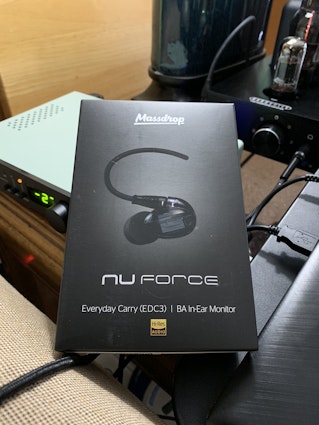
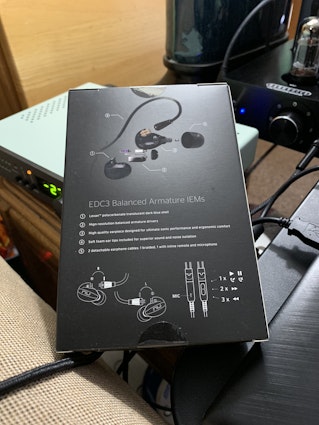
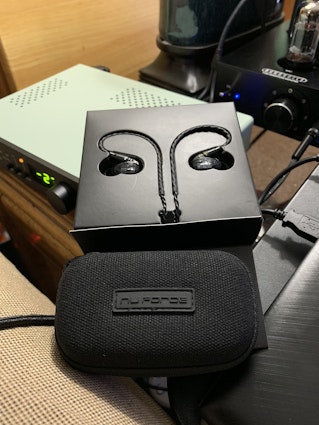
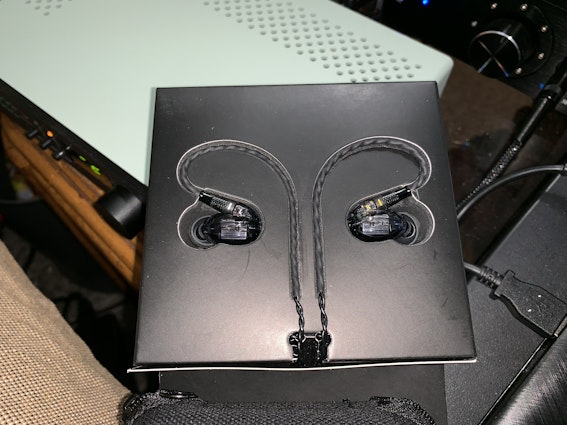
Accessories: I would consider the accessories that are included with the EDC3 to be above average. They come with two cables (one has a mic), 3 pairs of silicone ear tips (S, M, L), 2 pairs of foam ear tips (M, L), a shirt clip, and a carry case.
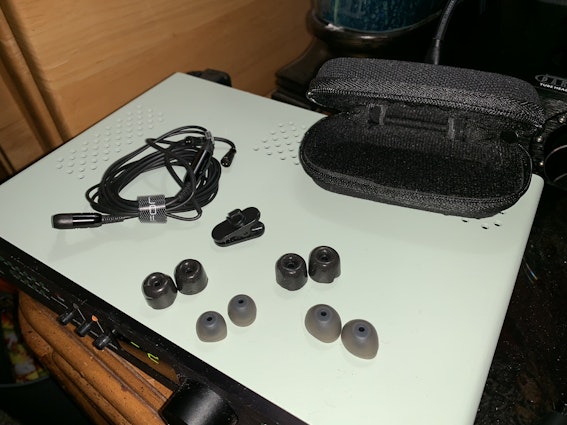
The audio-only cable that comes pre-installed on the EDC3 is excellent. It exhibits very low levels of microphonics, is very supple, does not retain its shape, and is tightly wound. On the amp-end, it is terminated in a right-angle 3.5mm jack that feels sturdy enough. I generally prefer a straight plug but I can't knock it for that because I know that's a preference thing. The IEM side is terminated in a standard 2-pin configuration. This is the only IEM around $100 that I can think of that uses a standard 2-pin connection. That is excellent news for anyone who likes to use aftermarket cables. Overall, this is one of the nicest stock cables I've come across on an IEM.
The silicone tips feel pretty cheap. I'm not a fan of them. They are quite firm and have noticeable seams on the sides. While I could get a good seal with them and could not feel the seams once they were in my ears, they were generally uncomfortable because of how stiff they were. I quickly switched them out for some Spin Fits which greatly improved the fit and comfort. The EDC3 have a narrow nozzle - like offerings from Shure or Westone. Keep that in mind when you're tip rolling.
The case is very nice. I love the look and semi-hard design. It should do a great job at keeping the IEMs safe while not in use. My only minor nitpick with the case is that I wish it was round or more of a square. The rectangular design means once the cable is coiled for storage, two sides are going to more squished instead of retaining the round, coiled shape. Again, this is a very small nitpick. The EDC3's case is much nicer than the ones that come with the Hifiman RE600v2 or Shure SE-215; both of which come in at the same price point. I will do more in depth comparisons with those below.
Build Quality: The housings are made of plastic but feel pretty robust. The only seam-line on the housing matches up very nicely and isn't noticeable unless you're looking for it. The cable and case also feel high quality. I have no doubts these will hold up just fine to daily wear-and-tear and travel.
Comfort/Fit: Comfort was just okay when I was using the stock silicone tips. As I said above, I quickly switched over to Spin Fit tips and comfort improved. With the Spin Fit tips, comfort is very good. I can easily have them in for a couple hours at a time. Besides the pressure created by the tips, they completely disappear once they're in.The stock, audio-only cable weighs next to nothing and they feel very light overall. I don't like memory wires or molded cables on the IEM-side of cables but the molded heat-shrink wrap on the stock cable is very well done and I don't have any complaints.
Between the light weight, cable, and fit, they are very secure in my ears. They easily stay in during a run.
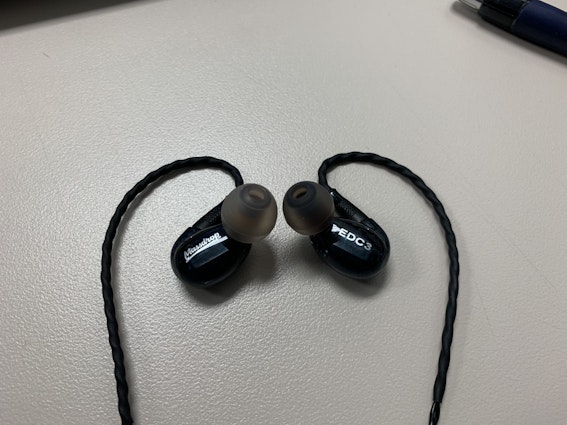
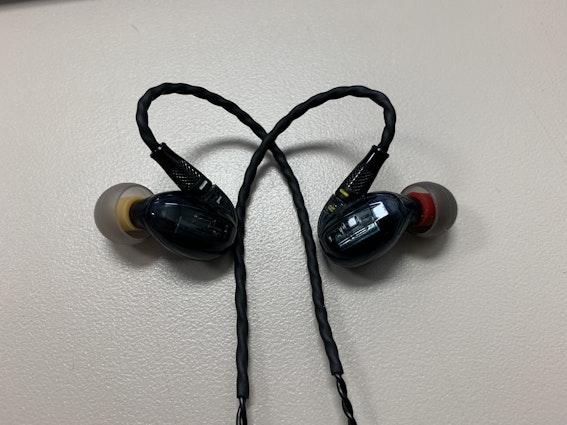
Sound
Equipment Used: I used two different DAC/amps in my listening sessions: an iFi iDSD micro BL and a Soekris dac1541. Source music from Tidal.
First Impressions: When I first put them in, I was not impressed. They sounded veiled and vocals sounded a little unnatural. I figured I'd set them down for a couple hours and get back to them later that evening. If you're a little disappointed at first, set them down for a couple hours and then go back to them. To be fair to the EDC3, I switched to them from the Utopia and that probably skewed my first impressions.
Bass: (3.5/5)
The first thing I noticed with the bass is how well it extends for a triple BA IEM. It goes down to ~30Hz. That being said, the sub bass impact sounds rather weak. I would describe the bass as neutral with a slight roll-off at the very low end. I would also describe it as typical BA bass in that it can hit the low notes but it does not have the natural decay or impact of that of a good dynamic driver. The bass feels very fast; almost a little too fast in terms of decay. This is something that most BA IEMs struggle with.
Listening to beat-centric songs or songs with strong bass lines is a bit boring. While a lot of this is just the neutral sound signature, some of it comes down to how natural the bass sounds. If the bass produced by dynamic drivers sounds natural to you, then this IEM may not suit you. Also, if you prefer a bass quantity above neutral, the EDC3 is not for you.
I tried using the bass boost on the iDSD BL and got poor results; the bass increased a little but not nearly as much as I would normally expect. The bass seemed to lose a little definition when using the bass boost which is something I've never experienced from the iDSD before. It seems as though the bass driver(s) in the EDC3 are not able to efficiently produce much more bass than they're tuned to. I have not tried EQ but I assume the outcome would be similar.
Midrange: (4.5/5)
The midrange is the star of the show here. The midrange is almost dead flat with just a slight hint of warmth to it. The midrange is clear and instruments sound very natural. Most vocals sound very nice as well. Some female vocals can sound a little veiled due to what I perceive as a dip in the upper midrange that hits its trough in the middle of the presence region (low treble). This is why I felt they were veiled in my first impressions. This is also probably why I hear them to be slightly warm. If the presence region was brought up a little, I'm sure I'd hear them as completely neutral. One of the songs where I really noticed this dip was The Other Side by Tonight Alive. What's weird is that I didn't really notice it as much with other songs by Tonight Alive. Because of the dip, vocals sound like they're back as a part of the music, rather than front and center where I normally expect them to be.
Treble: (4/5)
Following the dip in the presence region, the treble response sounds fairly smooth up to ~13kHz. There is a peak around 10kHz but it is small and does not create any sibilance. After 13kHz it seems to fall off quite a bit. It does go up to where I can't hear around 17kHz but after 13kHz it's pretty quiet. I would like a bit more extension into this high region. The treble sounds like it's a little held back, just below neutral. While these don't have quite enough quantity or extension for my taste, what the treble does do is provide a very smooth and completely inoffensive presentation. It makes the EDC3 a very comfortable IEM to listen to for long periods.
Soundstage/Imaging: Soundstage is about average in width for an IEM; all of the sound is produced between my ears. Nothing sounds like it's coming from outside my head. Imaging is very good in that I can pick out instrument locations in that soundstage quite easily.
The soundstage has much more height and depth than most other IEMs I've heard. It's almost like the inside of my head is a concert hall and the entire thing is being filled with sound: front to back and top to bottom. Most IEMs produce sound between my ears and it sounds like everything comes from a narrow band (vertically) in that area. I guess it's kind of hard to explain.
Detail Retrieval/Other: The EDC3 are about average in terms of overall detail at this price point. There is a good amount of separation between instruments and they never sound congested. Isolation is good, but not great. It's not as good as I'd normally expect from an all-BA IEM but better than many hybrid IEMs that I've heard. It looks like there's a bass port in the housing, on the ear-side, near the cable connection. I suspect this is the reason for the lower-than-expected isolation. Still, they should isolate well enough for a daily commute on public transportation. I never use public transportation so it's hard for me to say for sure. For example, they isolate a lot better than my FLC 8S which I have used on a subway before with satisfactory results.
Comparisons
Shure SE215 ($99): The SE215 are much bassier and have a warmer sound overall. In comparison, the SE215 sound a more congested and don't have the same sense of naturalness in the midrange that the EDC3 have. The treble on the SE215 is a bit more recessed and doesn't sound quite as accurate.
The accessories that come with the EDC3 are nicer. The EDC3's cables feel higher quality and I would consider the 2-pin connection a step up from the SE215's MMCX. The EDC3's (semi) hard case will actually protect them instead of the soft case the SE215 come with that allow the IEMs to be crushed. Build quality (longevity) is similar but I think I'll have to give it to the EDC3 because the housings feel just a little bit nicer and it comes with a second cable. As I said above, the EDC3 case offers better protection and if you use it, it should keep them from being damaged - even if thrown under other objects in a backpack.
I find the EDC3 to be much more comfortable with a better fit. I use the same exact Spin Fit tips on the SE215 and I find that it's harder to get a seal with them. The SE215 housings don't fit my ears as well as the EDC3 and I notice a bit of discomfort after about 15-30 minutes of use. For me, the EDC3 win this in every way. However, if you prefer a bass-heavy signature to a neutral one, the SE215 are more likely to please you.
HifiMan RE600S Songbird V2 ($99): The two of these IEMs actually sound somewhat similar. Bass response is about the same in terms of quantity but the quality is a little better on the RE600S. The RE600S's dynamic driver produces a more natural sounding bass response and has better sub bass impact. The midrange on the RE600S sounds a bit cooler. I would say it is slightly cool of neutral about the same amount that the EDC3 is slightly warm of neutral. The treble is where the biggest difference occurs. The RE600S comes off as a little brighter and takes more of your focus than on the EDC3. IMO, the bass and treble are better on the RE600S while the EDC3 has a better, more natural sounding midrange. I'd say sound quality is about the same on both.
Soundstage is similar but the RE600S doesn't have as much height or depth to the sound. Overall detail is about the same but the RE600S sounds like it beats the EDC3. I think this is because the treble takes more of your focus. Generally speaking, people perceive more treble as more detail.
Build quality is far better on the EDC3. The fact that the EDC3 has removable cables is enough reason alone to buy it over the RE600S. The EDC3's cables are much nicer.
The RE600S is more comfortable than the EDC3. The housings are even smaller and lighter with the added bonus that they can be worn over or under the ear. The biggest reason I find the RE600S more comfortable is that I can use my normal UE (900S) silicon tips on it. Those tips fit me better than the Spin Fit tips. The stock tips that come with the RE600S are higher quality than the ones that come with the EDC3. The only thing the RE600S does substantially better is the packaging and unboxing experience. While this is a very minor thing, opening the RE600S is an experience and the leather-bound box makes you feel like you're opening something special. Still, it's not a reason to buy it over the EDC3.
This matchup is much closer, with overall sound quality being about the same. However, the difference in build quality and the removable cables make the EDC3 the clear winner.
Conclusion
If you're in the market for a neutral IEM around $100, look no further. The EDC3 is an IEM that isn't the best at any one thing but does everything well. It is the most well-rounded IEM less than $300 I've had the pleasure to own in terms of sound, comfort, build, and accessories.
Massdrop hit the mark in trying to make a great Every Day Carry IEM.
The midrange is the best part of the sound and it isn't perfect IMO. It could use a little more energy in the upper midrange and presence region. The dip in that region can make some vocals sound a little veiled but I don't notice it most of the time. What's odd is that I don't fully love any one part of the sound but when I put them in, I don't want to stop listening to them. They have a very relaxed, sweet sound that is very pleasing and easy to listen to. They are not fatiguing in any way.
The EDC3 are now my most-likely-to-recommend IEM at the $100 price point and, if you can, I highly urge you to give them a listen.
Side note: For the number rankings, they are rated out of 5. 5/5 being the best sound quality possible in the sub $100 category.
I'm giving them 4.5/5 because the sound, fit, and accessories are all excellent.
I originally wrote this review almost two months ago (for Massdrop and Reddit) and since then, the EDC3 have been the IEMs I reach for the most out of all my options. I use them almost every day.
Songs listed below are just a few of the MANY tracks I listened to with the EDC3:
Snuff - Slipknot
The Other Side, Without You - Tonight Alive
Dreams - Fleetwood Mac
Come On - Green River Ordinance
Best Days - Graham Colton
Tarova - Snarky Puppy
Rack City - Tyga
Superstition - Stevie Wonder
Aliens (her er jeg) - Ina Wroldsen
Mahna, Mahna - Cake
Strobe - Deadmau5
I'm Comin' Over - Chris Young
Your Shirt - Chelsea Cutler
Nobody Compares to You - Griffin and Katie Pearlman
Cool - Rachel Reinert
I O U - You Me At Six
God of War - Bear McCreary
Bird on a Wire - Jennifer Warnes
Not the American Average - Asking Alexandria
Used to You - Dagny
Keep Lying - Donna Missal
Rebecca - Pat McGee Band
Disclaimer: The EDC3 were sent to me free of charge by Massdrop in exchange for an honest review. I will keep the review as fair and unbiased as possible. Thanks Christian!
Also, this review is quite long as I may have gotten a little carried away when typing it up.
I am sorry for any weird formatting issues you may come across as this is essentially a copy-paste from Reddit, where I originally wrote this review.
My Preferences: I generally prefer a flat/neutral frequency response with a bit of extra energy in the upper midrange (+3dB above 4kHz) and sub bass regions (+3dB below 150Hz). I generally dislike any sort of midrange recession. The response of the Etymotic ER4XR, 64 Audio A6t, and Focal Utopia are good references for the kind of sound signature I like. An HD700 with Sonarworks True-Fi is generally my reference for a neutral sound.
TL;DR: These are now my go-to recommendation for a neutral IEM at the $100 price point. They have an excellent, somewhat mid-centric sound and good accessories. On top of that, they're very comfortable and have a stable fit.
The Non-Sound Stuff
Packaging/Unboxing: The packaging has a nice, clean look to it. Inside the outer box are the IEMs and the carry case. With the exception of the medium silicone tips and audio-only cable which are pre-installed, all the accessories are inside the case. Overall, the packaging is very minimal which is fine for an IEM at this price point.




Accessories: I would consider the accessories that are included with the EDC3 to be above average. They come with two cables (one has a mic), 3 pairs of silicone ear tips (S, M, L), 2 pairs of foam ear tips (M, L), a shirt clip, and a carry case.

The audio-only cable that comes pre-installed on the EDC3 is excellent. It exhibits very low levels of microphonics, is very supple, does not retain its shape, and is tightly wound. On the amp-end, it is terminated in a right-angle 3.5mm jack that feels sturdy enough. I generally prefer a straight plug but I can't knock it for that because I know that's a preference thing. The IEM side is terminated in a standard 2-pin configuration. This is the only IEM around $100 that I can think of that uses a standard 2-pin connection. That is excellent news for anyone who likes to use aftermarket cables. Overall, this is one of the nicest stock cables I've come across on an IEM.
The silicone tips feel pretty cheap. I'm not a fan of them. They are quite firm and have noticeable seams on the sides. While I could get a good seal with them and could not feel the seams once they were in my ears, they were generally uncomfortable because of how stiff they were. I quickly switched them out for some Spin Fits which greatly improved the fit and comfort. The EDC3 have a narrow nozzle - like offerings from Shure or Westone. Keep that in mind when you're tip rolling.
The case is very nice. I love the look and semi-hard design. It should do a great job at keeping the IEMs safe while not in use. My only minor nitpick with the case is that I wish it was round or more of a square. The rectangular design means once the cable is coiled for storage, two sides are going to more squished instead of retaining the round, coiled shape. Again, this is a very small nitpick. The EDC3's case is much nicer than the ones that come with the Hifiman RE600v2 or Shure SE-215; both of which come in at the same price point. I will do more in depth comparisons with those below.
Build Quality: The housings are made of plastic but feel pretty robust. The only seam-line on the housing matches up very nicely and isn't noticeable unless you're looking for it. The cable and case also feel high quality. I have no doubts these will hold up just fine to daily wear-and-tear and travel.
Comfort/Fit: Comfort was just okay when I was using the stock silicone tips. As I said above, I quickly switched over to Spin Fit tips and comfort improved. With the Spin Fit tips, comfort is very good. I can easily have them in for a couple hours at a time. Besides the pressure created by the tips, they completely disappear once they're in.The stock, audio-only cable weighs next to nothing and they feel very light overall. I don't like memory wires or molded cables on the IEM-side of cables but the molded heat-shrink wrap on the stock cable is very well done and I don't have any complaints.
Between the light weight, cable, and fit, they are very secure in my ears. They easily stay in during a run.


Sound
Equipment Used: I used two different DAC/amps in my listening sessions: an iFi iDSD micro BL and a Soekris dac1541. Source music from Tidal.
First Impressions: When I first put them in, I was not impressed. They sounded veiled and vocals sounded a little unnatural. I figured I'd set them down for a couple hours and get back to them later that evening. If you're a little disappointed at first, set them down for a couple hours and then go back to them. To be fair to the EDC3, I switched to them from the Utopia and that probably skewed my first impressions.
Bass: (3.5/5)
The first thing I noticed with the bass is how well it extends for a triple BA IEM. It goes down to ~30Hz. That being said, the sub bass impact sounds rather weak. I would describe the bass as neutral with a slight roll-off at the very low end. I would also describe it as typical BA bass in that it can hit the low notes but it does not have the natural decay or impact of that of a good dynamic driver. The bass feels very fast; almost a little too fast in terms of decay. This is something that most BA IEMs struggle with.
Listening to beat-centric songs or songs with strong bass lines is a bit boring. While a lot of this is just the neutral sound signature, some of it comes down to how natural the bass sounds. If the bass produced by dynamic drivers sounds natural to you, then this IEM may not suit you. Also, if you prefer a bass quantity above neutral, the EDC3 is not for you.
I tried using the bass boost on the iDSD BL and got poor results; the bass increased a little but not nearly as much as I would normally expect. The bass seemed to lose a little definition when using the bass boost which is something I've never experienced from the iDSD before. It seems as though the bass driver(s) in the EDC3 are not able to efficiently produce much more bass than they're tuned to. I have not tried EQ but I assume the outcome would be similar.
Midrange: (4.5/5)
The midrange is the star of the show here. The midrange is almost dead flat with just a slight hint of warmth to it. The midrange is clear and instruments sound very natural. Most vocals sound very nice as well. Some female vocals can sound a little veiled due to what I perceive as a dip in the upper midrange that hits its trough in the middle of the presence region (low treble). This is why I felt they were veiled in my first impressions. This is also probably why I hear them to be slightly warm. If the presence region was brought up a little, I'm sure I'd hear them as completely neutral. One of the songs where I really noticed this dip was The Other Side by Tonight Alive. What's weird is that I didn't really notice it as much with other songs by Tonight Alive. Because of the dip, vocals sound like they're back as a part of the music, rather than front and center where I normally expect them to be.
Treble: (4/5)
Following the dip in the presence region, the treble response sounds fairly smooth up to ~13kHz. There is a peak around 10kHz but it is small and does not create any sibilance. After 13kHz it seems to fall off quite a bit. It does go up to where I can't hear around 17kHz but after 13kHz it's pretty quiet. I would like a bit more extension into this high region. The treble sounds like it's a little held back, just below neutral. While these don't have quite enough quantity or extension for my taste, what the treble does do is provide a very smooth and completely inoffensive presentation. It makes the EDC3 a very comfortable IEM to listen to for long periods.
Soundstage/Imaging: Soundstage is about average in width for an IEM; all of the sound is produced between my ears. Nothing sounds like it's coming from outside my head. Imaging is very good in that I can pick out instrument locations in that soundstage quite easily.
The soundstage has much more height and depth than most other IEMs I've heard. It's almost like the inside of my head is a concert hall and the entire thing is being filled with sound: front to back and top to bottom. Most IEMs produce sound between my ears and it sounds like everything comes from a narrow band (vertically) in that area. I guess it's kind of hard to explain.
Detail Retrieval/Other: The EDC3 are about average in terms of overall detail at this price point. There is a good amount of separation between instruments and they never sound congested. Isolation is good, but not great. It's not as good as I'd normally expect from an all-BA IEM but better than many hybrid IEMs that I've heard. It looks like there's a bass port in the housing, on the ear-side, near the cable connection. I suspect this is the reason for the lower-than-expected isolation. Still, they should isolate well enough for a daily commute on public transportation. I never use public transportation so it's hard for me to say for sure. For example, they isolate a lot better than my FLC 8S which I have used on a subway before with satisfactory results.
Comparisons
Shure SE215 ($99): The SE215 are much bassier and have a warmer sound overall. In comparison, the SE215 sound a more congested and don't have the same sense of naturalness in the midrange that the EDC3 have. The treble on the SE215 is a bit more recessed and doesn't sound quite as accurate.
The accessories that come with the EDC3 are nicer. The EDC3's cables feel higher quality and I would consider the 2-pin connection a step up from the SE215's MMCX. The EDC3's (semi) hard case will actually protect them instead of the soft case the SE215 come with that allow the IEMs to be crushed. Build quality (longevity) is similar but I think I'll have to give it to the EDC3 because the housings feel just a little bit nicer and it comes with a second cable. As I said above, the EDC3 case offers better protection and if you use it, it should keep them from being damaged - even if thrown under other objects in a backpack.
I find the EDC3 to be much more comfortable with a better fit. I use the same exact Spin Fit tips on the SE215 and I find that it's harder to get a seal with them. The SE215 housings don't fit my ears as well as the EDC3 and I notice a bit of discomfort after about 15-30 minutes of use. For me, the EDC3 win this in every way. However, if you prefer a bass-heavy signature to a neutral one, the SE215 are more likely to please you.
HifiMan RE600S Songbird V2 ($99): The two of these IEMs actually sound somewhat similar. Bass response is about the same in terms of quantity but the quality is a little better on the RE600S. The RE600S's dynamic driver produces a more natural sounding bass response and has better sub bass impact. The midrange on the RE600S sounds a bit cooler. I would say it is slightly cool of neutral about the same amount that the EDC3 is slightly warm of neutral. The treble is where the biggest difference occurs. The RE600S comes off as a little brighter and takes more of your focus than on the EDC3. IMO, the bass and treble are better on the RE600S while the EDC3 has a better, more natural sounding midrange. I'd say sound quality is about the same on both.
Soundstage is similar but the RE600S doesn't have as much height or depth to the sound. Overall detail is about the same but the RE600S sounds like it beats the EDC3. I think this is because the treble takes more of your focus. Generally speaking, people perceive more treble as more detail.
Build quality is far better on the EDC3. The fact that the EDC3 has removable cables is enough reason alone to buy it over the RE600S. The EDC3's cables are much nicer.
The RE600S is more comfortable than the EDC3. The housings are even smaller and lighter with the added bonus that they can be worn over or under the ear. The biggest reason I find the RE600S more comfortable is that I can use my normal UE (900S) silicon tips on it. Those tips fit me better than the Spin Fit tips. The stock tips that come with the RE600S are higher quality than the ones that come with the EDC3. The only thing the RE600S does substantially better is the packaging and unboxing experience. While this is a very minor thing, opening the RE600S is an experience and the leather-bound box makes you feel like you're opening something special. Still, it's not a reason to buy it over the EDC3.
This matchup is much closer, with overall sound quality being about the same. However, the difference in build quality and the removable cables make the EDC3 the clear winner.
Conclusion
If you're in the market for a neutral IEM around $100, look no further. The EDC3 is an IEM that isn't the best at any one thing but does everything well. It is the most well-rounded IEM less than $300 I've had the pleasure to own in terms of sound, comfort, build, and accessories.
Massdrop hit the mark in trying to make a great Every Day Carry IEM.
The midrange is the best part of the sound and it isn't perfect IMO. It could use a little more energy in the upper midrange and presence region. The dip in that region can make some vocals sound a little veiled but I don't notice it most of the time. What's odd is that I don't fully love any one part of the sound but when I put them in, I don't want to stop listening to them. They have a very relaxed, sweet sound that is very pleasing and easy to listen to. They are not fatiguing in any way.
The EDC3 are now my most-likely-to-recommend IEM at the $100 price point and, if you can, I highly urge you to give them a listen.
Side note: For the number rankings, they are rated out of 5. 5/5 being the best sound quality possible in the sub $100 category.
I'm giving them 4.5/5 because the sound, fit, and accessories are all excellent.
I originally wrote this review almost two months ago (for Massdrop and Reddit) and since then, the EDC3 have been the IEMs I reach for the most out of all my options. I use them almost every day.
Songs listed below are just a few of the MANY tracks I listened to with the EDC3:
Snuff - Slipknot
The Other Side, Without You - Tonight Alive
Dreams - Fleetwood Mac
Come On - Green River Ordinance
Best Days - Graham Colton
Tarova - Snarky Puppy
Rack City - Tyga
Superstition - Stevie Wonder
Aliens (her er jeg) - Ina Wroldsen
Mahna, Mahna - Cake
Strobe - Deadmau5
I'm Comin' Over - Chris Young
Your Shirt - Chelsea Cutler
Nobody Compares to You - Griffin and Katie Pearlman
Cool - Rachel Reinert
I O U - You Me At Six
God of War - Bear McCreary
Bird on a Wire - Jennifer Warnes
Not the American Average - Asking Alexandria
Used to You - Dagny
Keep Lying - Donna Missal
Rebecca - Pat McGee Band


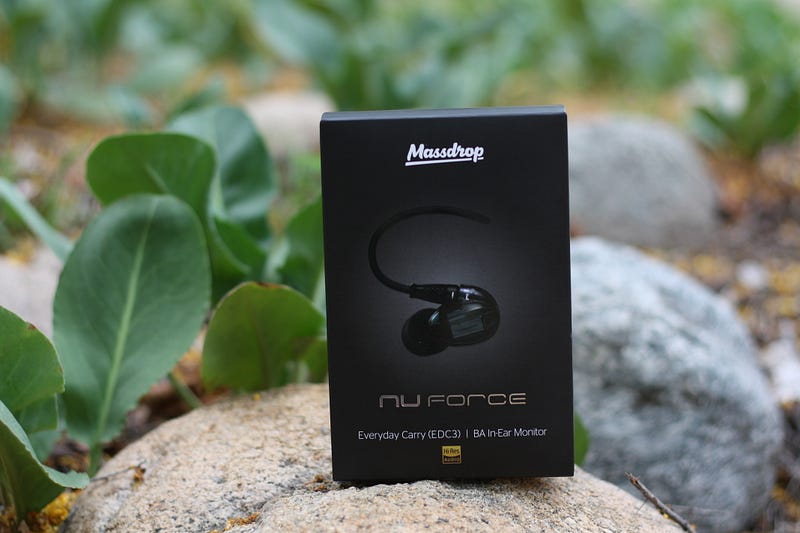

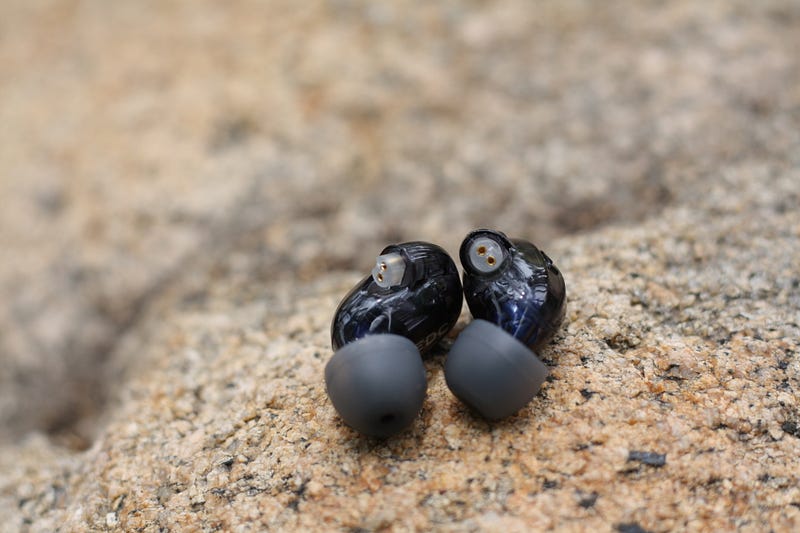
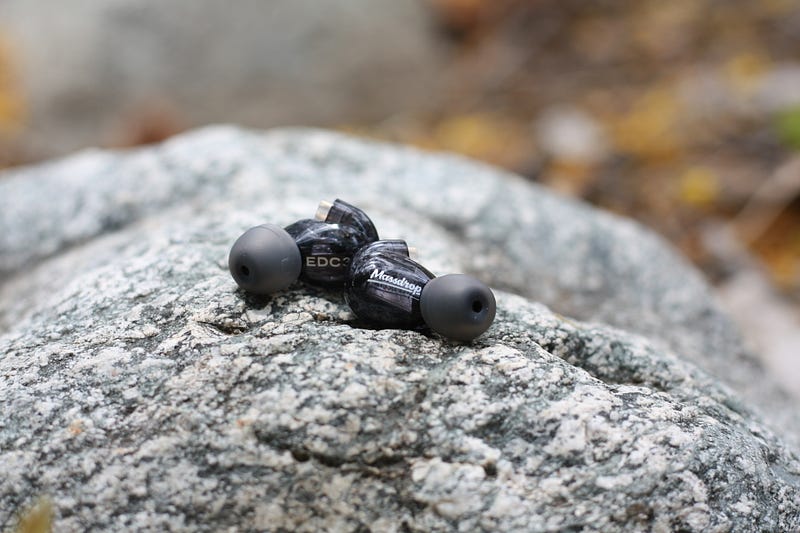


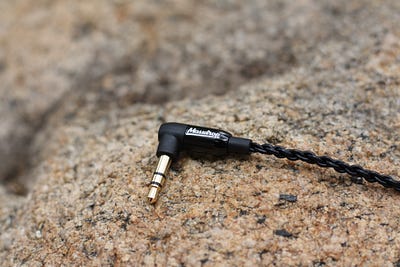
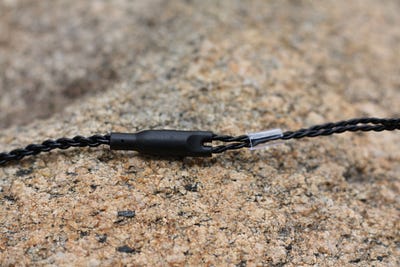














If you think the Plus Is on a good level, then perhaps then the V shaped regular EDC is a better choice. If you think the Plus, is a on the bright side, maybe the warmer EDC3 may be better. I feel that the EDC3 works best with vocals, and instruments like guitar that resides around the upper mids lower treble area.